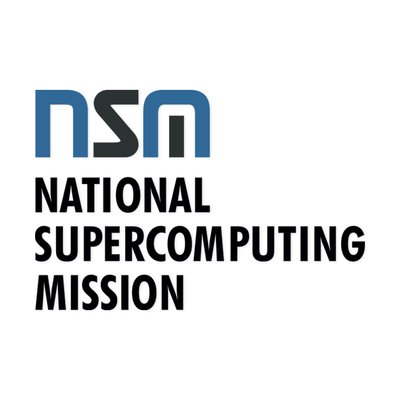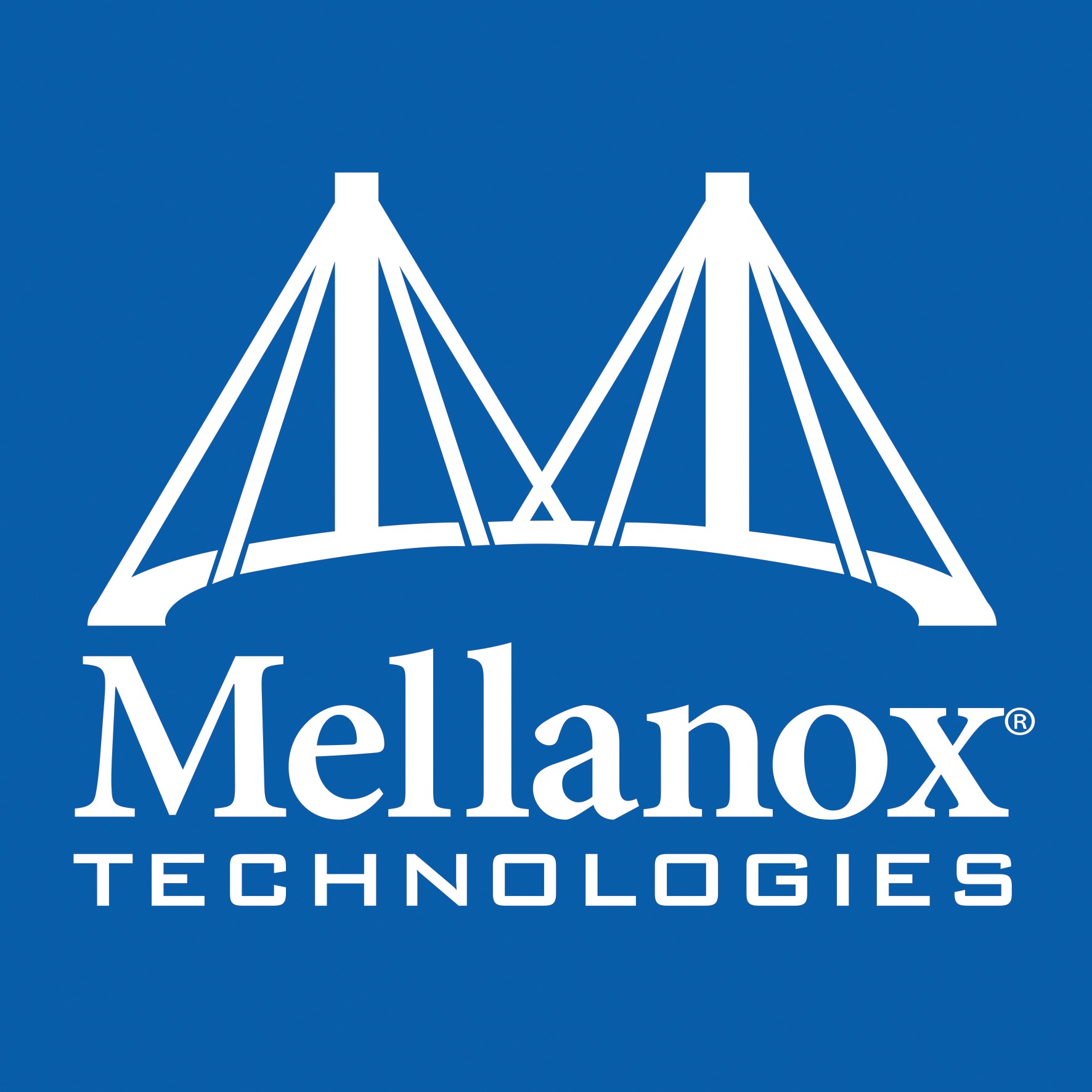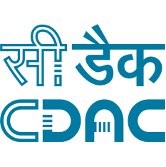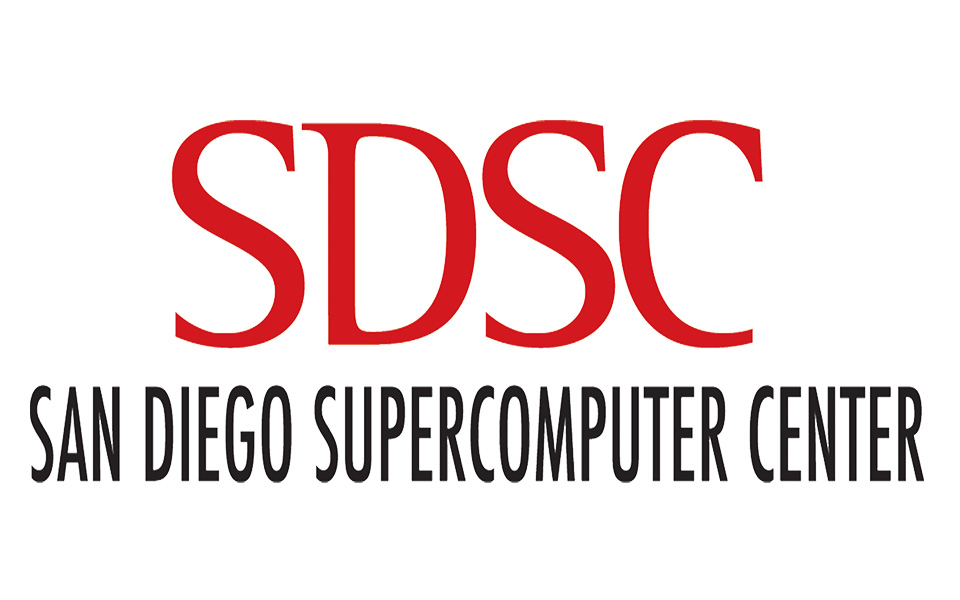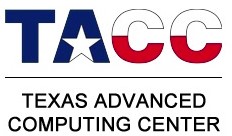Agenda on December 13, 2018
Agenda on December 13, 2018
Agenda on December 13, 2018
Agenda on December 13, 2018
Agenda on December 13, 2018
08:45 AM - 09:15 AM
REGISTRATION, TEA/COFFEE
08:45 AM - 09:45 AM
REGISTRATION, TEA/COFFEE
09:45 AM - 10:00 AM
Opening Remarks
Dr. Amit Majumdar, Dr. Ritu Arora
09:45 AM - 10:00 AM
Opening Remarks
Dr. Amit Majumdar, Dr. Ritu Arora
10:00 AM - 10:30 AM
Computing for the Endless Frontier
Dr. Dan Stanzione
10:00 AM - 10:30 AM
Computing for the Endless Frontier
Dr. Dan Stanzione
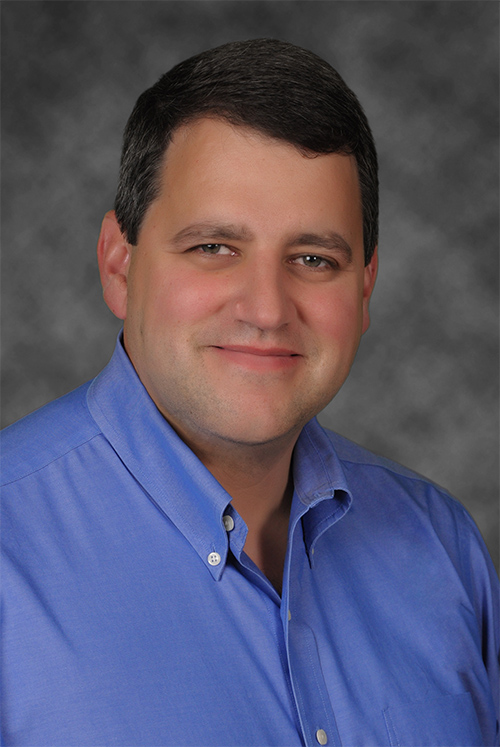
Bio: Dr. Stanzione is the Executive Director of the Texas Advanced Computing Center (TACC) at The University of Texas at Austin. A nationally recognized leader in high performance computing, Stanzione has served as deputy director since June 2009 and assumed the Executive Director post on July 1, 2014.
He is the principal investigator (PI) for several leading projects including a multimillion-dollar National Science Foundation (NSF) grant to deploy and support TACC's Stampede supercomputer over four years. Stanzione is also the PI of TACC's Wrangler system, a supercomputer designed specifically for data-focused applications. He served for six years as the co-director of CyVerse, a large-scale NSF life sciences cyberinfrastructure in which TACC is a major partner. In addition, Stanzione was a co-principal investigator for TACC's Ranger and Lonestar supercomputers, large-scale NSF systems previously deployed at UT Austin. Stanzione previously served as the founding director of the Fulton High Performance Computing Initiative at Arizona State University and served as an American Association for the Advancement of Science Policy Fellow in the NSF's Division of Graduate Education.
Stanzione received his bachelor's degree in electrical engineering and his master's degree and doctorate in computer engineering from Clemson University, where he later directed the supercomputing laboratory and served as an assistant research professor of electrical and computer engineering.
Presentation Slides:
Computing for the Endless Frontier
Presentation Video

Bio: Dr. Stanzione is the Executive Director of the Texas Advanced Computing Center (TACC) at The University of Texas at Austin. A nationally recognized leader in high performance computing, Stanzione has served as deputy director since June 2009 and assumed the Executive Director post on July 1, 2014.
He is the principal investigator (PI) for several leading projects including a multimillion-dollar National Science Foundation (NSF) grant to deploy and support TACC's Stampede supercomputer over four years. Stanzione is also the PI of TACC's Wrangler system, a supercomputer designed specifically for data-focused applications. He served for six years as the co-director of CyVerse, a large-scale NSF life sciences cyberinfrastructure in which TACC is a major partner. In addition, Stanzione was a co-principal investigator for TACC's Ranger and Lonestar supercomputers, large-scale NSF systems previously deployed at UT Austin. Stanzione previously served as the founding director of the Fulton High Performance Computing Initiative at Arizona State University and served as an American Association for the Advancement of Science Policy Fellow in the NSF's Division of Graduate Education.
Stanzione received his bachelor's degree in electrical engineering and his master's degree and doctorate in computer engineering from Clemson University, where he later directed the supercomputing laboratory and served as an assistant research professor of electrical and computer engineering.
Presentation Slides:
Computing for the Endless Frontier
Presentation Video
10:30 AM - 11:00 AM
Designing Scalable HPC, Deep Learning, Big Data and Cloud Middleware for Exascale Systems
Dr. D.K. Panda
10:30 AM - 11:00 AM
Designing Scalable HPC, Deep Learning, Big Data and Cloud Middleware for Exascale Systems
Dr. D.K. Panda
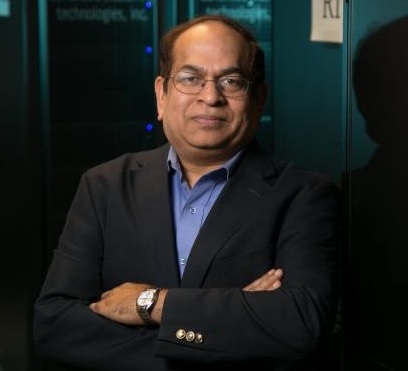
Abstract: This talk will focus on challenges in designing HPC, Deep Learning,
Big Data, and HPC Cloud middleware for Exascale systems with millions
of processors and accelerators. For the HPC domain, we will discuss
about the challenges in designing runtime environments for MPI+X (PGAS
- OpenSHMEM/UPC/CAF/UPC++, OpenMP, and CUDA) programming models by
taking into account support for multi-core systems (Xeon, ARM and
OpenPower), high-performance networks, GPGPUs (including GPUDirect
RDMA), and energy-awareness. Features, sample performance numbers and
best practices of using MVAPICH2 libraries (http://mvapich.cse.ohio-
state.edu)will be presented. For the Deep Learning domain, we will
focus on popular Deep Learning frameworks (Caffe, CNTK, and
TensorFlow) to extract performance and scalability with MVAPICH2-GDR
MPI library. For the Big Data domain, we will focus on high-
performance and scalable designs of Spark and Hadoop (including HDFS,
MapReduce, RPC, and HBase) and the associated Deep Learning frameworks
using native RDMA support for InfiniBand and RoCE. Finally, we will
outline the challenges in moving these middleware to the Cloud
environments using OpenStack, Docker, and Singularity.
Bio: Dr. DK Panda is a Professor and University Distinguished Scholar of
Computer Science and Engineering at the Ohio State University. He has
published over 450 papers in the area of high-end computing and
networking. The MVAPICH2 (High Performance MPI and PGAS over
InfiniBand, Omni-Path, iWARP and RoCE) libraries, designed and
developed by his research group (http://mvapich.cse.ohio-state.edu),
are currently being used by more than 2,950 organizations worldwide
(in 86 countries). More than 502,000 downloads of this software have
taken place from the project's site. This software is empowering
several InfiniBand clusters (including the 2 nd , 12 th , 15 th , and 24 th
ranked ones) in the TOP500 list. The RDMA packages for Apache Spark,
Apache Hadoop and Memcached together with OSU HiBD benchmarks from his
group (http://hibd.cse.ohio-state.edu) are also publicly available.
These libraries are currently being used by more than 290
organizations in 34 countries. More than 28,500 downloads of these
libraries have taken place. High-performance and scalable versions of
the Caffe and TensorFlow frameworks are available from
http://hidl.cse.ohio-state.edu. Prof. Panda is an IEEE Fellow. More
details about Prof. Panda are available at http://www.cse.ohio-state.edu/~panda.
Presentation Slides:
Designing Scalable HPC, Deep Learning, Big Data and Cloud Middleware for Exascale Systems
Presentation Video

Abstract: This talk will focus on challenges in designing HPC, Deep Learning,
Big Data, and HPC Cloud middleware for Exascale systems with millions
of processors and accelerators. For the HPC domain, we will discuss
about the challenges in designing runtime environments for MPI+X (PGAS
- OpenSHMEM/UPC/CAF/UPC++, OpenMP, and CUDA) programming models by
taking into account support for multi-core systems (Xeon, ARM and
OpenPower), high-performance networks, GPGPUs (including GPUDirect
RDMA), and energy-awareness. Features, sample performance numbers and
best practices of using MVAPICH2 libraries (http://mvapich.cse.ohio-
state.edu)will be presented. For the Deep Learning domain, we will
focus on popular Deep Learning frameworks (Caffe, CNTK, and
TensorFlow) to extract performance and scalability with MVAPICH2-GDR
MPI library. For the Big Data domain, we will focus on high-
performance and scalable designs of Spark and Hadoop (including HDFS,
MapReduce, RPC, and HBase) and the associated Deep Learning frameworks
using native RDMA support for InfiniBand and RoCE. Finally, we will
outline the challenges in moving these middleware to the Cloud
environments using OpenStack, Docker, and Singularity.
Bio: Dr. DK Panda is a Professor and University Distinguished Scholar of
Computer Science and Engineering at the Ohio State University. He has
published over 450 papers in the area of high-end computing and
networking. The MVAPICH2 (High Performance MPI and PGAS over
InfiniBand, Omni-Path, iWARP and RoCE) libraries, designed and
developed by his research group (http://mvapich.cse.ohio-state.edu),
are currently being used by more than 2,950 organizations worldwide
(in 86 countries). More than 502,000 downloads of this software have
taken place from the project's site. This software is empowering
several InfiniBand clusters (including the 2 nd , 12 th , 15 th , and 24 th
ranked ones) in the TOP500 list. The RDMA packages for Apache Spark,
Apache Hadoop and Memcached together with OSU HiBD benchmarks from his
group (http://hibd.cse.ohio-state.edu) are also publicly available.
These libraries are currently being used by more than 290
organizations in 34 countries. More than 28,500 downloads of these
libraries have taken place. High-performance and scalable versions of
the Caffe and TensorFlow frameworks are available from
http://hidl.cse.ohio-state.edu. Prof. Panda is an IEEE Fellow. More
details about Prof. Panda are available at http://www.cse.ohio-state.edu/~panda.
Presentation Slides:
Designing Scalable HPC, Deep Learning, Big Data and Cloud Middleware for Exascale Systems
Presentation Video
11:00 AM - 11:30 AM
Corrfunc: Blazing fast correlation functions with SIMD Intrinsics
Dr. Manodeep Sinha
11:00 AM - 11:30 AM
Corrfunc: Blazing fast correlation functions with SIMD Intrinsics
Dr. Manodeep Sinha
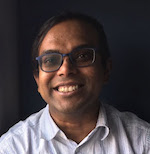
Abstract: One of the major computational challenges of modern astrophysics is quantifying
how galaxies are grouped or clustered. Galaxy clustering is determined by a
combination of universal cosmological parameters, gravity, and the physics of
galaxy formation. Quantifying galaxy clustering requires computing pair-wise
separations-- an inherently quadratic process. Consequently, comparing the
observed clustering of galaxies to that theoretically predicted is both useful
to advance our understanding of physics and extremely technically
complex. Since observational studies of galaxies and the theoretical models,
contain millions of galaxies, computing the clustering strength becomes a
bottleneck in the analysis pipeline. Here I present Corrfunc -- a suite of
OpenMP-parallelized clustering codes that target current CPU micro-architecture
with custom Advanced Vector Extensions (AVX512F, AVX) and Streaming SIMD
Extensions (SSE) intrinsics. By design, Corrfunc is highly optimized and is at
least a factor of few faster than all existing public galaxy clustering
correlation function routines. The algorithm within Corrfunc can be easily
adapted to a variety of different measurements and has already been implemented
for nearest neighbour searches, group finding in galaxy surveys, weak lensing
measurements etc. Corrfunc is covered by a suite of tests, extensive
documentation and is publicly available at
https://github.com/manodeep/Corrfunc. Software like Corrfunc highlights how we
need a combination of efficient algorithms, custom software designed and tuned
for the underlying hardware to go beyond the petascale frontier into the
exascale regime.
Bio: Dr. Manodeep Sinha is a computational astrophysicist based at Centre for
Astrophysics at Swinburne University of Technology, Melbourne. Dr. Sinha is
part of a large research collaboration -- ARC Centre of Excellence for All Sky
Astrophysics in 3D (ASTRO 3D) -- a $40 million research effort funded for 7
years and spread over multiple institutions across Australia. Dr. Sinha
obtained a PhD from The Pennsylvania State University in 2008 and has been a
postdoctoral fellow and research scientist at Vanderbilt University and
Swinburne University. His research interests include studying how galaxies form
and evolve in the Universe, and how to make realistic comparisons between
simulated and observed galaxies. Efficient computational methods form a core
requirements of his research, whether in relation to creating large
cosmological simulations or recreating real world observations. While an
astrophysicist by profession, his recent research has been to create optimized,
robust software required to solve research problems in astrophysics.
Presentation Slides:
Corrfunc: Blazing fast correlation functions with SIMD Intrinsics
Presentation Video

Abstract: One of the major computational challenges of modern astrophysics is quantifying
how galaxies are grouped or clustered. Galaxy clustering is determined by a
combination of universal cosmological parameters, gravity, and the physics of
galaxy formation. Quantifying galaxy clustering requires computing pair-wise
separations-- an inherently quadratic process. Consequently, comparing the
observed clustering of galaxies to that theoretically predicted is both useful
to advance our understanding of physics and extremely technically
complex. Since observational studies of galaxies and the theoretical models,
contain millions of galaxies, computing the clustering strength becomes a
bottleneck in the analysis pipeline. Here I present Corrfunc -- a suite of
OpenMP-parallelized clustering codes that target current CPU micro-architecture
with custom Advanced Vector Extensions (AVX512F, AVX) and Streaming SIMD
Extensions (SSE) intrinsics. By design, Corrfunc is highly optimized and is at
least a factor of few faster than all existing public galaxy clustering
correlation function routines. The algorithm within Corrfunc can be easily
adapted to a variety of different measurements and has already been implemented
for nearest neighbour searches, group finding in galaxy surveys, weak lensing
measurements etc. Corrfunc is covered by a suite of tests, extensive
documentation and is publicly available at
https://github.com/manodeep/Corrfunc. Software like Corrfunc highlights how we
need a combination of efficient algorithms, custom software designed and tuned
for the underlying hardware to go beyond the petascale frontier into the
exascale regime.
Bio: Dr. Manodeep Sinha is a computational astrophysicist based at Centre for
Astrophysics at Swinburne University of Technology, Melbourne. Dr. Sinha is
part of a large research collaboration -- ARC Centre of Excellence for All Sky
Astrophysics in 3D (ASTRO 3D) -- a $40 million research effort funded for 7
years and spread over multiple institutions across Australia. Dr. Sinha
obtained a PhD from The Pennsylvania State University in 2008 and has been a
postdoctoral fellow and research scientist at Vanderbilt University and
Swinburne University. His research interests include studying how galaxies form
and evolve in the Universe, and how to make realistic comparisons between
simulated and observed galaxies. Efficient computational methods form a core
requirements of his research, whether in relation to creating large
cosmological simulations or recreating real world observations. While an
astrophysicist by profession, his recent research has been to create optimized,
robust software required to solve research problems in astrophysics.
Presentation Slides:
Corrfunc: Blazing fast correlation functions with SIMD Intrinsics
Presentation Video
11:30 AM - 11:50 AM
TEA & COFFEE Break
11:30 AM - 11:50 AM
TEA & COFFEE Break
11:50 AM - 12:00 PM
Group Photo
11:50 AM - 12:00 PM
Group Photo
12:00 PM - 12:10 PM
Analyzing IO Usage Patterns of User Jobs to Improve Overall HPC System Efficiency
Syed Sadat Nazrul, Cherie Huang, Mahidhar Tatineni, Nicole Wolter, Dmitry Mishin, Trevor Cooper and Amit Majumdar
12:10 PM - 12:20 PM
Scalable Software Infrastructure for Integrating Supercomputing with Volunteer Computing
Ritu Arora, Carlos Redondo and Gerald Joshua
12:20 PM - 12:30 PM
Computational Microscopy of Biomolecular Processes using High Performance Computing: Challenges and Perspectives
Divya Nayar
12:00 PM - 12:10 PM
Analyzing IO Usage Patterns of User Jobs to Improve Overall HPC System Efficiency
Syed Sadat Nazrul, Cherie Huang, Mahidhar Tatineni, Nicole Wolter, Dmitry Mishin, Trevor Cooper and Amit Majumdar
12:10 PM - 12:20 PM
Scalable Software Infrastructure for Integrating Supercomputing with Volunteer Computing
Ritu Arora, Carlos Redondo and Gerald Joshua
12:20 PM - 12:30 PM
Computational Microscopy of Biomolecular Processes using High Performance Computing: Challenges and Perspectives
Divya Nayar
12:30 PM - 1:00 PM
High Performance Networks in the World of AI
Ashrut Ambastha
12:30 PM - 1:00 PM
High Performance Networks in the World of AI
Ashrut Ambastha
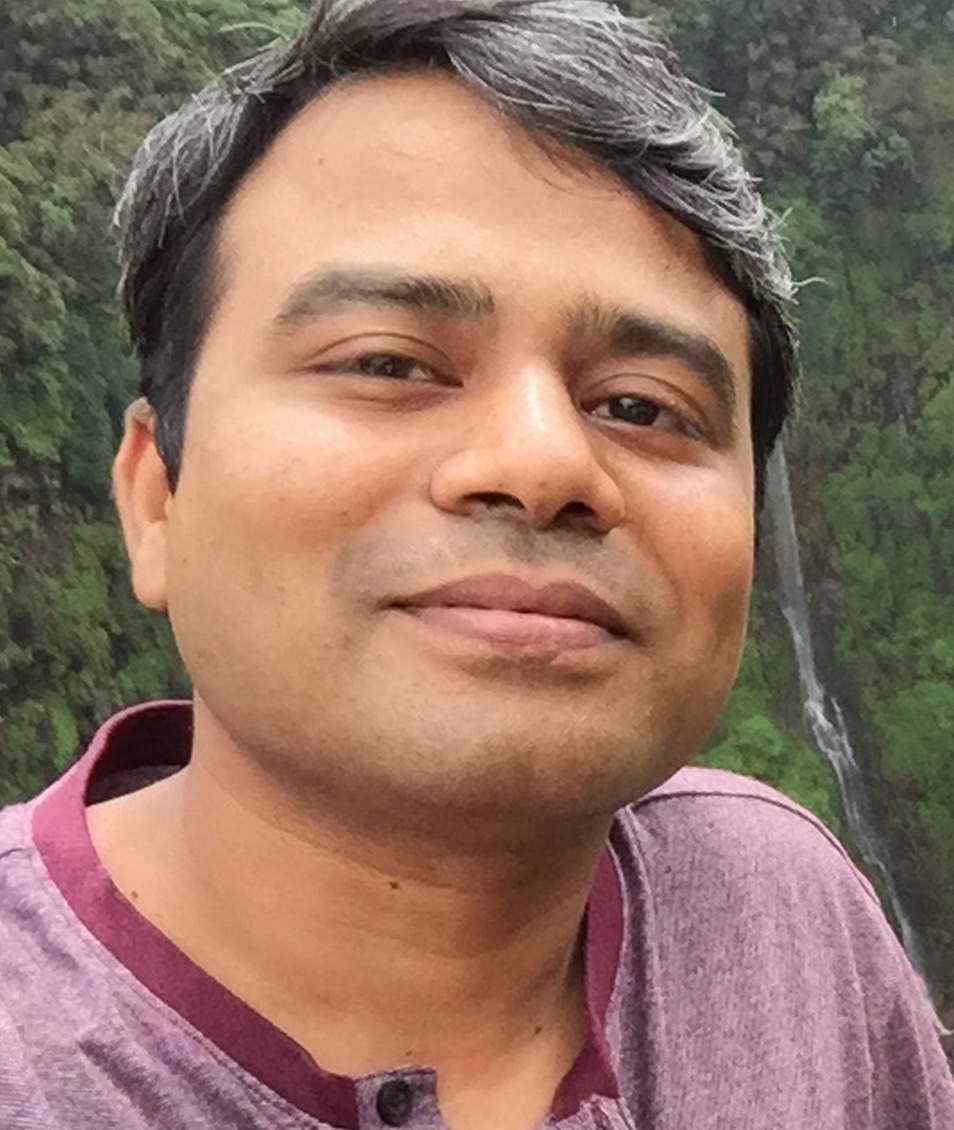
Abstract: This talk is aimed towards professionals interested in discussing the role of current and up-coming Interconnect in the field of Artificial Intelligence. We will start with analysing the latest “in-network computing” architecture of Infiniband and then move on to discuss how these advancements are being applied to address the demands of emerging markets of AI/Machine learning.
Bio: Ashrut Ambastha is a Sr. Staff Architect at Mellanox responsible for defining network fabric for large scale Infiniband clusters and high-performance datacenter fabric. He is also a member of application engineering team that works on product designs with Mellanox silicon devices. Prior to Mellanox, he worked for Tata Computational Research Labs in India and was involved in architecting the Infiniband backbone for Tata’s HPC system “Eka” that was ranked #4 in Top500 list of SC07. Ashrut’s professional interests includes network topologies, routing algorithms and phy signal Integrity analysis/simulations. He holds an MTech in Electrical Engineering from Indian Institute of Technology-Bombay.

Abstract: This talk is aimed towards professionals interested in discussing the role of current and up-coming Interconnect in the field of Artificial Intelligence. We will start with analysing the latest “in-network computing” architecture of Infiniband and then move on to discuss how these advancements are being applied to address the demands of emerging markets of AI/Machine learning.
Bio: Ashrut Ambastha is a Sr. Staff Architect at Mellanox responsible for defining network fabric for large scale Infiniband clusters and high-performance datacenter fabric. He is also a member of application engineering team that works on product designs with Mellanox silicon devices. Prior to Mellanox, he worked for Tata Computational Research Labs in India and was involved in architecting the Infiniband backbone for Tata’s HPC system “Eka” that was ranked #4 in Top500 list of SC07. Ashrut’s professional interests includes network topologies, routing algorithms and phy signal Integrity analysis/simulations. He holds an MTech in Electrical Engineering from Indian Institute of Technology-Bombay.
1:00 PM - 2:00 PM
LUNCH BREAK & NETWORKING (ICE-BREAKING SESSION)
1:00 PM - 2:00 PM
LUNCH BREAK & NETWORKING (ICE-BREAKING SESSION)
2:00 PM - 2:30 PM
Performance Portability Challenges for Exascale Computing
Dr. P. (Saday) Sadayappan
2:00 PM - 2:30 PM
Performance Portability Challenges for Exascale Computing
Dr. P. (Saday) Sadayappan

Abstract: The increasing trend of heterogeneity and custom architectures makes software productivity and performance portability of high-performance applications extremely challenging. Compilers can play a prominent role in addressing these software challenges. However, a fundamental challenge faced by optimizing compilers is that of modeling and minimizing data movement overheads. The cost of data movement currently dominates the cost of arithmetic/logic operations, both in terms of energy and time. While computational complexity of algorithms in terms of elementary arithmetic/logic operations is quite well understood, the same is not true of the data movement complexity of computations. More effective models of data movement complexity are needed for building effective optimizing compilers for current/emerging platforms. One promising approach is to develop domain/pattern specific optimization strategies. Examples of domain-specific optimization for tensor computations and stencil computations on GPUs will be discussed.
Bio: Dr. P. (Saday) Sadayappan is a University Distinguished Scholar and Professor of Computer Science and Engineering at The Ohio State University. His research interests include compiler optimization for heterogeneous systems, domain/pattern-specific compiler optimization, and characterization of data movement complexity of algorithms. He is a Fellow of the IEEE.
Presentation Slides:
Performance Portability Challenges for Exascale Computing

Abstract: The increasing trend of heterogeneity and custom architectures makes software productivity and performance portability of high-performance applications extremely challenging. Compilers can play a prominent role in addressing these software challenges. However, a fundamental challenge faced by optimizing compilers is that of modeling and minimizing data movement overheads. The cost of data movement currently dominates the cost of arithmetic/logic operations, both in terms of energy and time. While computational complexity of algorithms in terms of elementary arithmetic/logic operations is quite well understood, the same is not true of the data movement complexity of computations. More effective models of data movement complexity are needed for building effective optimizing compilers for current/emerging platforms. One promising approach is to develop domain/pattern specific optimization strategies. Examples of domain-specific optimization for tensor computations and stencil computations on GPUs will be discussed.
Bio: Dr. P. (Saday) Sadayappan is a University Distinguished Scholar and Professor of Computer Science and Engineering at The Ohio State University. His research interests include compiler optimization for heterogeneous systems, domain/pattern-specific compiler optimization, and characterization of data movement complexity of algorithms. He is a Fellow of the IEEE.
Presentation Slides:
Performance Portability Challenges for Exascale Computing
2:30 PM - 2:45 PM
High Level file system and parallel I/O optimization of DNS Code
Bipin Kumar, Nachiket Manapragada and Neethi Suresh
2:45 PM - 3:00 PM
Performance Analysis of Computational Neuroscience Software NEURON on Knights Corner Many Core Processors
Pramod S. Kumbhar, Subhashini Sivagnanam, Kenneth Yoshimoto, Michael Hines, Ted Carnevale and Amit Majumdar
2:30 PM - 2:45 PM
High Level file system and parallel I/O optimization of DNS Code
Bipin Kumar, Nachiket Manapragada and Neethi Suresh
2:45 PM - 3:00 PM
Performance Analysis of Computational Neuroscience Software NEURON on Knights Corner Many Core Processors
Pramod S. Kumbhar, Subhashini Sivagnanam, Kenneth Yoshimoto, Michael Hines, Ted Carnevale and Amit Majumdar
3:00 PM - 4:00 PM
Discussion Groups
Potential Topics: Benchmarking, Parallel Programming Tools & Environments, Science Gateways, Power Optimization, Memory Optimization, Fault Tolerance, Code Correctness, Software for Managing HPC Systems
3:00 PM - 4:00 PM
Discussion Groups
Potential Topics: Benchmarking, Parallel Programming Tools & Environments, Science Gateways, Power Optimization, Memory Optimization, Fault Tolerance, Code Correctness, Software for Managing HPC Systems
4:00 PM - 4:20 PM
TEA & COFFEE Break
4:00 PM - 4:20 PM
TEA & COFFEE Break
4:20 PM - 5:20 PM
Discussion Groups
Potential Topics: Benchmarking, Parallel Programming Tools & Environments, Science Gateways, Power Optimization, Memory Optimization, Fault Tolerance, Code Correctness, Software for Managing HPC Systems
4:20 PM - 5:20 PM
Discussion Groups
Potential Topics: Benchmarking, Parallel Programming Tools & Environments, Science Gateways, Power Optimization, Memory Optimization, Fault Tolerance, Code Correctness, Software for Managing HPC Systems
5:20 PM - 5:40 PM
Group Leads Present a Summary/Short Presentation of their Discussions
5:20 PM - 5:40 PM
Group Leads Present a Summary/Short Presentation of their Discussions
NETWORKING RECEPTION - 7:00 PM to 9:00 PM
NETWORKING RECEPTION - 7:00 PM to 9:00 PM
Agenda on December 14, 2018
Agenda on December 14, 2018
Agenda on December 14, 2018
Agenda on December 14, 2018
Agenda on December 14, 2018
08:30 AM - 9:15 AM
NETWORKING OVER TEA/COFFEE
08:30 AM - 9:15 AM
NETWORKING OVER TEA/COFFEE
09:15 AM - 9:20 AM
Opening Remarks
Dr. Amit Majumdar, Dr. Ritu Arora
09:15 AM - 9:20 AM
Opening Remarks
Mr. Vinodh Kumar Markapuram
09:25 AM - 9:55 AM
Developing IEEE-TCPP Parallel/Distributed Curriculum and NSF Office of Advanced Cyberinfrastructure CyberTraining Program
Dr. Sushil Prasad
09:25 AM - 9:55 AM
Developing IEEE-TCPP Parallel/Distributed Curriculum and NSF Office of Advanced Cyberinfrastructure CyberTraining Program
Dr. Sushil Prasad
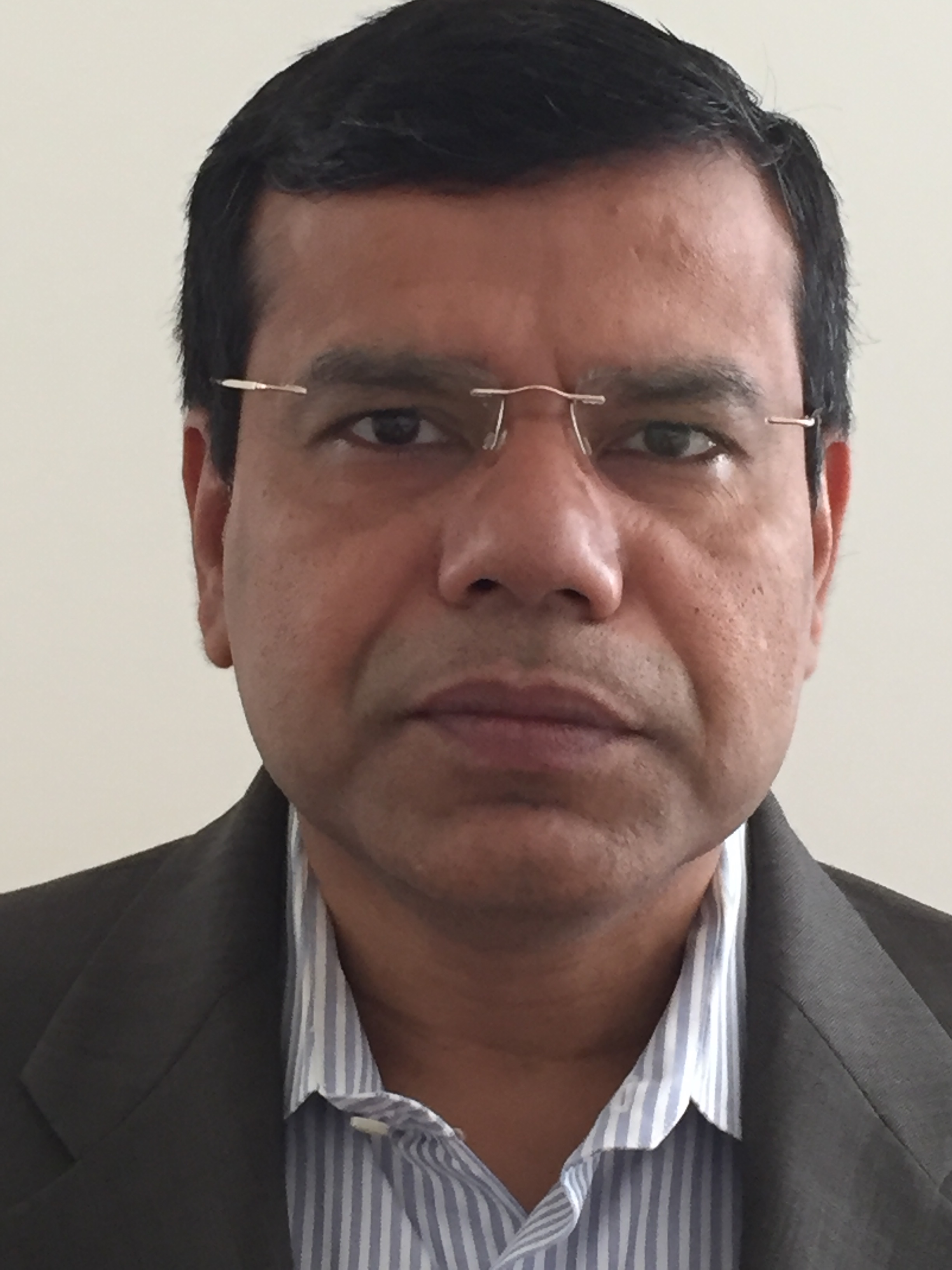
Abstract: The NSF-supported Center for Parallel and Distributed Computing Curriculum Development and Educational Resources (CDER), in collaboration with the IEEE TC on Parallel Processing (TCPP), developed undergraduate curriculum guidelines for parallel and distributed computing (PDC), from 2010 to 2012. Our goal has been to migrate Computer Science (CS) and Computer Engineering (CE) courses in the first two years from the sequential model toward the now pervasive paradigm of parallel computing. This curriculum initiative that has now over 100 early adopter institutions nationally and internationally, including in India and vicinity. It has heavily influenced the ACM/IEEE Taskforce on Computer Science Curricula 2013 for their PDC thrust. I will describe this initiative and its current update efforts along the key aspects of big data, energy, and distributed computing.
The US National Science Foundation Office of Advanced Cyberinfrastructure (OAC) has introduced a CyberTraining program (NSF 19-524) for education and training aimed to fully prepare scientific workforce for nation's research enterprise to innovate and utilize high performance computing resources, tools and methods. The community response in its two rounds of competition have exceeded expectations. I will introduce this, as well as research and education programs for early-career faculty such CAREER and CRII. I will also touch on NSF's ten big ideas, including Harnessing the Data Revolution.
Bio: Sushil K. Prasad is a Program Director at US National Science Foundation in its Office of Advanced Cyberinfrastructure (OAC) in the Computer and Information Science and Engineering (CISE) directorate leading its emerging research and education programs such as CAREER, CRII, Expeditions, CyberTraining, and the most-recently introduced OAC-Core research. He is an ACM Distinguished Scientist and a Professor of Computer Science at Georgia State University. He is the director of Distributed and Mobile Systems Lab carrying out research in Parallel, Distributed, and Data Intensive Computing and Systems. He has been twice-elected chair of IEEE-CS Technical Committee on Parallel Processing (TCPP), and leads the NSF-supported TCPP Curriculum Initiative on Parallel and Distributed Computing for undergraduate education.
Presentation Slides:
Developing IEEE-TCPP Parallel/Distributed Curriculum and NSF Office of Advanced Cyberinfrastructure CyberTraining Program
Presentation Video

Abstract: The NSF-supported Center for Parallel and Distributed Computing Curriculum Development and Educational Resources (CDER), in collaboration with the IEEE TC on Parallel Processing (TCPP), developed undergraduate curriculum guidelines for parallel and distributed computing (PDC), from 2010 to 2012. Our goal has been to migrate Computer Science (CS) and Computer Engineering (CE) courses in the first two years from the sequential model toward the now pervasive paradigm of parallel computing. This curriculum initiative that has now over 100 early adopter institutions nationally and internationally, including in India and vicinity. It has heavily influenced the ACM/IEEE Taskforce on Computer Science Curricula 2013 for their PDC thrust. I will describe this initiative and its current update efforts along the key aspects of big data, energy, and distributed computing.
The US National Science Foundation Office of Advanced Cyberinfrastructure (OAC) has introduced a CyberTraining program (NSF 19-524) for education and training aimed to fully prepare scientific workforce for nation's research enterprise to innovate and utilize high performance computing resources, tools and methods. The community response in its two rounds of competition have exceeded expectations. I will introduce this, as well as research and education programs for early-career faculty such CAREER and CRII. I will also touch on NSF's ten big ideas, including Harnessing the Data Revolution.
Bio: Sushil K. Prasad is a Program Director at US National Science Foundation in its Office of Advanced Cyberinfrastructure (OAC) in the Computer and Information Science and Engineering (CISE) directorate leading its emerging research and education programs such as CAREER, CRII, Expeditions, CyberTraining, and the most-recently introduced OAC-Core research. He is an ACM Distinguished Scientist and a Professor of Computer Science at Georgia State University. He is the director of Distributed and Mobile Systems Lab carrying out research in Parallel, Distributed, and Data Intensive Computing and Systems. He has been twice-elected chair of IEEE-CS Technical Committee on Parallel Processing (TCPP), and leads the NSF-supported TCPP Curriculum Initiative on Parallel and Distributed Computing for undergraduate education.
Presentation Slides:
Developing IEEE-TCPP Parallel/Distributed Curriculum and NSF Office of Advanced Cyberinfrastructure CyberTraining Program
Presentation Video
10:00 AM - 10:30 AM
A Relook at Parallel Algorithms for Graphs
Dr. Kishore Kothapalli
10:00 AM - 10:30 AM
A Relook at Parallel Algorithms for Graphs
Dr. Kishore Kothapalli
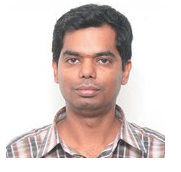
Abstract: Recent advances in designing and implementing parallel algorithms
for a variety of graph problems have been quite successful. These success
stories often come with a host of data structure and memory bandwidth
optimizations apart from innovations in algorithmic techniques.
On the other hand, there is a sizeable body of work that considers
the impact of specific structural properties of graphs in arriving at
practically better parallel graph algorithms. These structural properties
can vary from the nature of the degree distribution to the connectivity
of the graph.
In this talk, we will show examples of the above process to algorithms
for testing connecitivity and computing metrics on graphs. Experimental
evidence to illustrate the advantages of these algorithms will also
be presented.
Bio: Dr. Kishore Kothapalli is presently an Associate Professor at the International Institute of Information
Technology, Hyderabad, where he is working since 2006. Prior to that, he obtained his doctoral degree
in Computer Science from the Johns Hopkins University, USA, and his Master's degree in Computer
Science from Indian Institute of Technology, Kanpur. His current research interests are in parallel
algorithms for problems on graphs, sparse matrices, and the like. He is also interested in data structures
for geometric problems.

Abstract: Recent advances in designing and implementing parallel algorithms
for a variety of graph problems have been quite successful. These success
stories often come with a host of data structure and memory bandwidth
optimizations apart from innovations in algorithmic techniques.
On the other hand, there is a sizeable body of work that considers
the impact of specific structural properties of graphs in arriving at
practically better parallel graph algorithms. These structural properties
can vary from the nature of the degree distribution to the connectivity
of the graph.
In this talk, we will show examples of the above process to algorithms
for testing connecitivity and computing metrics on graphs. Experimental
evidence to illustrate the advantages of these algorithms will also
be presented.
Bio: Dr. Kishore Kothapalli is presently an Associate Professor at the International Institute of Information
Technology, Hyderabad, where he is working since 2006. Prior to that, he obtained his doctoral degree
in Computer Science from the Johns Hopkins University, USA, and his Master's degree in Computer
Science from Indian Institute of Technology, Kanpur. His current research interests are in parallel
algorithms for problems on graphs, sparse matrices, and the like. He is also interested in data structures
for geometric problems.
10:30 AM to 11:00 AM
Phase field modelling: current challenges and opportunities for high performance computing
Dr. M. P. Gururajan
10:30 AM to 11:00 AM
Phase field modelling: current challenges and opportunities for high performance computing
Dr. M. P. Gururajan

Abstract: The properties of engineering materials are decided by their microstructure -- the structure of materials at length scales larger than atomic but smaller than the visible range. The microstructures can be tuned during the processing of materials; and, during service conditions, these microstructures continue to evolve. Thus, the formation and evolution of microstructures is one of the key areas of materials engineering. Continuum models known as phase field models have been used in the last three decades to model microstructural evolution. These models are physics based; they help us understand the reasons and mechanisms behind microstructural evolution; they are also useful in designing microstructures of engineering materials. Thus, phase field models are of both academic and practical interest. One of the challenges in implementing phase field models is computational; in this presentation, I will make an attempt to show the need for validated and benchmarked open source phase field codes and large scale computations using such codes in order to make progress in developing advanced materials.
Bio: Dr. M. P. Gururajan is presently Associate Professor in the department of Metallurgical Engineering and Material Science at Indian Institute of Technology, Bombay, where he is working since 2009. He obtained his M.Sc(Engg) and Ph.D in Metallurgy from the Indian Institute of Science, Bangalore. His research interests include modelling of microstructural evolution, atomistic (Monte Carlo and Molecular dynamics) and continuum (phase field modelling) models, materials mechanics and thermodynamics, phase transformations, deformation and phase transformation induced micro-structural changes. Apart from teaching courses in material science, he has been actively involved in the conduct of the Technical Communication Skills course at IIT Bombay. He has offered NPTEL online course on Phase field modelling: the materials science, mathematics and computational aspects.
Presentation Slides:
Phase Field Modelling - Current Challenges and Opportunities for High Performance Computing
Movie That Accompanied the Presentation

Abstract: The properties of engineering materials are decided by their microstructure -- the structure of materials at length scales larger than atomic but smaller than the visible range. The microstructures can be tuned during the processing of materials; and, during service conditions, these microstructures continue to evolve. Thus, the formation and evolution of microstructures is one of the key areas of materials engineering. Continuum models known as phase field models have been used in the last three decades to model microstructural evolution. These models are physics based; they help us understand the reasons and mechanisms behind microstructural evolution; they are also useful in designing microstructures of engineering materials. Thus, phase field models are of both academic and practical interest. One of the challenges in implementing phase field models is computational; in this presentation, I will make an attempt to show the need for validated and benchmarked open source phase field codes and large scale computations using such codes in order to make progress in developing advanced materials.
Bio: Dr. M. P. Gururajan is presently Associate Professor in the department of Metallurgical Engineering and Material Science at Indian Institute of Technology, Bombay, where he is working since 2009. He obtained his M.Sc(Engg) and Ph.D in Metallurgy from the Indian Institute of Science, Bangalore. His research interests include modelling of microstructural evolution, atomistic (Monte Carlo and Molecular dynamics) and continuum (phase field modelling) models, materials mechanics and thermodynamics, phase transformations, deformation and phase transformation induced micro-structural changes. Apart from teaching courses in material science, he has been actively involved in the conduct of the Technical Communication Skills course at IIT Bombay. He has offered NPTEL online course on Phase field modelling: the materials science, mathematics and computational aspects.
Presentation Slides:
Phase Field Modelling - Current Challenges and Opportunities for High Performance Computing
Movie That Accompanied the Presentation
11:00 AM - 11:30 AM
Challenges in fluid flow simulations using Exa-scale computing
Dr. M.K. Verma
11:00 AM - 11:30 AM
Challenges in fluid flow simulations using Exa-scale computing
Dr. M.K. Verma
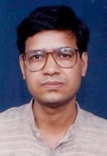
Abstract: HPC has seen steep growth in hardware, but a similar growth in parallel programming is lacking. In this talk I will attempt to highlight challenges of simulating fluid flows using large number of processors. As a test case, I will present a spectral-solver TARANG that has been scaled up to 196608 processors on SHAHEEN II of KAUST. I will also discuss complexities of Fast Fourier Transform (FFT) and finite difference schemes.
Reference: A. G. Chatterjee, M. K. Verma, A. Kumar, R. Samtaney, B. Hadri, and R. Khurram, Scaling of a Fast Fourier Transform and a pseudo-spectral fluid solver up to 196608 cores, J. Parallel Distrib. Comput.,113, 77 (2018).
http://turbulencehub.org (for TARANG, FFTK download)
Bio: Dr. Mahendra K. Verma is presently a Professor of Physics at Indian Institute of Technology, Kanpur,
where he is working since 1994. He obtained his doctoral degree from University of Mary Land,
College Park, USA. He leads an interdisciplinary group working in the area of turbulence and non-
linear physics. The broad interest of his group are magnetohydrodynamic and convective turbulence,
application of field theoretic methods to turbulence, direct numerical simulation of turbulence; high
performance computing and non-equilibrium statistical mechanics. His group had developed open-
source code TARANG and demonstrated its usage for turbulence simulation at extreme scales. He is
an avid teacher and has authored two books; Introduction to Mechanics and Physics of Buoyant Flows:
From Instabilities to Turbulence. He is receipient of the prestigeous Swarnajayanti fellowship of
Department od Science and Technology, India in 2006. He was awarded Inndian National Science
Academy (INSA) Teachers Award in 2016. He received Dr. A.P.J. Abdul Kalam Cray HPC award for
the development of TARANG in 2018.
Presentation Slides:
Challenges in fluid flow simulations using Exascale computing
Presentation Video

Abstract: HPC has seen steep growth in hardware, but a similar growth in parallel programming is lacking. In this talk I will attempt to highlight challenges of simulating fluid flows using large number of processors. As a test case, I will present a spectral-solver TARANG that has been scaled up to 196608 processors on SHAHEEN II of KAUST. I will also discuss complexities of Fast Fourier Transform (FFT) and finite difference schemes.
Reference: A. G. Chatterjee, M. K. Verma, A. Kumar, R. Samtaney, B. Hadri, and R. Khurram, Scaling of a Fast Fourier Transform and a pseudo-spectral fluid solver up to 196608 cores, J. Parallel Distrib. Comput.,113, 77 (2018).
http://turbulencehub.org (for TARANG, FFTK download)
Bio: Dr. Mahendra K. Verma is presently a Professor of Physics at Indian Institute of Technology, Kanpur,
where he is working since 1994. He obtained his doctoral degree from University of Mary Land,
College Park, USA. He leads an interdisciplinary group working in the area of turbulence and non-
linear physics. The broad interest of his group are magnetohydrodynamic and convective turbulence,
application of field theoretic methods to turbulence, direct numerical simulation of turbulence; high
performance computing and non-equilibrium statistical mechanics. His group had developed open-
source code TARANG and demonstrated its usage for turbulence simulation at extreme scales. He is
an avid teacher and has authored two books; Introduction to Mechanics and Physics of Buoyant Flows:
From Instabilities to Turbulence. He is receipient of the prestigeous Swarnajayanti fellowship of
Department od Science and Technology, India in 2006. He was awarded Inndian National Science
Academy (INSA) Teachers Award in 2016. He received Dr. A.P.J. Abdul Kalam Cray HPC award for
the development of TARANG in 2018.
Presentation Slides:
Challenges in fluid flow simulations using Exascale computing
Presentation Video
11:30 AM - 11:50 AM
TEA & COFFEE BREAK
11:30 AM - 11:50 AM
TEA & COFFEE BREAK
11:50 PM - 12:00 PM
Research Collaborator Recommendation using Hybrid Recommender System in Science Gateways through Conversational Agent
Sai Swathi Sivarathri, Yuanxun Zhang, Arjun Chandrashekara Ankathatti and Anjaneya Prasad Calyam
11:50 PM - 12:00 PM
Research Collaborator Recommendation using Hybrid Recommender System in Science Gateways through Conversational Agent
Sai Swathi Sivarathri, Yuanxun Zhang, Arjun Chandrashekara Ankathatti and Anjaneya Prasad Calyam
12:00 PM - 12:10 PM
High Impact Applications of Optimization and Statistics (Big-Data) on Multi-Petaflop Systems, enabled by MPPLab (E-Teacher) - A Parallel Application Software Composition Framework
China Vudutula and Narendra K Karmarkar
12:00 PM - 12:10 PM
High Impact Applications of Optimization and Statistics (Big-Data) on Multi-Petaflop Systems, enabled by MPPLab (E-Teacher) - A Parallel Application Software Composition Framework
China Vudutula and Narendra K Karmarkar
12:10 PM - 12:20 PM
High-Level Approaches for Leveraging Deep-Memory Hierarchies on Modern Supercomputers
Antonio Gómez-Iglesias and Ritu Arora
12:10 PM - 12:20 PM
High-Level Approaches for Leveraging Deep-Memory Hierarchies on Modern Supercomputers
Antonio Gómez-Iglesias and Ritu Arora
12:20 PM - 12:35 PM
Hybrid Parallelization of Particle in Cell Monte Carlo Collision (PIC-MCC) algorithm for simulation of Low temperature Plasmas
Bhaskar Chaudhury, Mihir Shah, Unnati Parekh, Hasnain Gandhi, Paramjeet Desai, Keval Shah, Anusha Phadnis, Miral Shah, Mainak Bandyopadhyay and Arun Chakraborty
12:20 PM - 12:35 PM
Hybrid Parallelization of Particle in Cell Monte Carlo Collision (PIC-MCC) algorithm for simulation of Low temperature Plasmas
Bhaskar Chaudhury, Mihir Shah, Unnati Parekh, Hasnain Gandhi, Paramjeet Desai, Keval Shah, Anusha Phadnis, Miral Shah, Mainak Bandyopadhyay and Arun Chakraborty
12:35 PM - 12:45 PM
Semi-Automatic Code Modernization for Optimal Parallel I/O
Ritu Arora, Trung Nguyen Ba
12:35 PM - 12:45 PM
Semi-Automatic Code Modernization for Optimal Parallel I/O
Ritu Arora, Trung Nguyen Ba
12:45 PM - 1:00 PM
Overcoming MPI Communication Overhead for Distributed Community Detection
Naw Safrin Sattar and Shaikh Arifuzzaman
12:45 PM - 1:00 PM
Overcoming MPI Communication Overhead for Distributed Community Detection
Naw Safrin Sattar and Shaikh Arifuzzaman
2:00 PM - 2:25 PM
Scientific Computing at Exascale
Dr. Santosh Ansumali
2:00 PM - 2:25 PM
Scientific Computing at Exascale
Dr. Santosh Ansumali
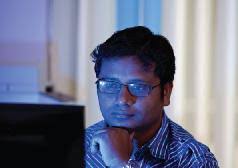
Abstract: In the last decade, scientific computing has provided a number of new insights for physical systems and now regularly used in engineering design for real-world engineering applications. Exascale computing should enable the execution of advanced simulation algorithms for computational physics on problems of a large size to provide new insight into the complex phenomena such as turbulence. The primary challenge in utilizing the full potential of emerging computing infrastructure for such large system sizes is in successfully handling the intensive floating point computations coupled with increased data movement operations. For example, direct numerical simulation of turbulence requires simulating a system with billions of degree of freedom. Similarly, in case of complex biological reaction network, one may need to generate billions of Gaussian random variables. In this talk, I will give a few examples of physics-based ideas which can be used for the creation of efficient simulation algorithms. For example, I will show that the idea of timescale separation suggests that the sequential fraction of usual finite difference equations can be drastically reduced by introducing delayed difference equations. Furthermore, I will show that a new class of pseudo-random number generators can be formulated based on the idea of molecular chaos.
Bio: Dr. Santosh Ansumali is presently Associate Professor with Engineering Mechanics unit of Jawaharlal Nehru Centre for Advanced Scientific Research (JNCASR), Bengaluru, where he is working since 2009. He is associated with SankyaSutra Lab, a start-up incubated at JNCASR, in capacity of Chief Technical Advisor. He obtained his Ph.D from ETH Swiss Federal Institute of Technology, Zurich. He leads the research activities of mesoscale simulation lab. His research interests include Mesoscale Simulation Methods (Lattice Boltzmann Method, Direct Simulation Monte Carlo), Kinetic Theory and Numerical Algorithms focussing on Turbulence Modeling, Computational Fluid Dynamics and Finite Volume Methods for Population Balance. He is the winner of ETH, Zurich (Switzerland) medal for Outstanding PhD thesis in 2005. He is recipient of Ramanujan Fellowship of Department of Science and Technology, India in 2009.

Abstract: In the last decade, scientific computing has provided a number of new insights for physical systems and now regularly used in engineering design for real-world engineering applications. Exascale computing should enable the execution of advanced simulation algorithms for computational physics on problems of a large size to provide new insight into the complex phenomena such as turbulence. The primary challenge in utilizing the full potential of emerging computing infrastructure for such large system sizes is in successfully handling the intensive floating point computations coupled with increased data movement operations. For example, direct numerical simulation of turbulence requires simulating a system with billions of degree of freedom. Similarly, in case of complex biological reaction network, one may need to generate billions of Gaussian random variables. In this talk, I will give a few examples of physics-based ideas which can be used for the creation of efficient simulation algorithms. For example, I will show that the idea of timescale separation suggests that the sequential fraction of usual finite difference equations can be drastically reduced by introducing delayed difference equations. Furthermore, I will show that a new class of pseudo-random number generators can be formulated based on the idea of molecular chaos.
Bio: Dr. Santosh Ansumali is presently Associate Professor with Engineering Mechanics unit of Jawaharlal Nehru Centre for Advanced Scientific Research (JNCASR), Bengaluru, where he is working since 2009. He is associated with SankyaSutra Lab, a start-up incubated at JNCASR, in capacity of Chief Technical Advisor. He obtained his Ph.D from ETH Swiss Federal Institute of Technology, Zurich. He leads the research activities of mesoscale simulation lab. His research interests include Mesoscale Simulation Methods (Lattice Boltzmann Method, Direct Simulation Monte Carlo), Kinetic Theory and Numerical Algorithms focussing on Turbulence Modeling, Computational Fluid Dynamics and Finite Volume Methods for Population Balance. He is the winner of ETH, Zurich (Switzerland) medal for Outstanding PhD thesis in 2005. He is recipient of Ramanujan Fellowship of Department of Science and Technology, India in 2009.
2:30 PM - 2:55 PM
Challenges in the Indian Approach to Exascale Computing
Dr. P.K. Sinha
2:30 PM - 2:55 PM
Challenges in the Indian Approach to Exascale Computing
Dr. P.K. Sinha
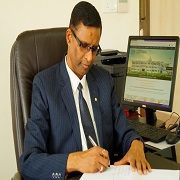
Abstract: Several countries are vying for HPC (High Performance Computing) leadership because supercomputers are seen as the most powerful tool for research and innovation in all
disciplines. After having crossed the 100 PetaFlops barrier, HPC players are now looking
forward to achieving the Exascale target. It is predicted that the first exascale system will be
built by the year 2020. Several countries including USA, China, Japan, France and Russia
launched their exascale initiatives more than a decade ago. India joined this League of Nations
in 2013 with the preparation of its National Supercomputing Mission (NSM) project proposal,
which was approved by the Government in 2015. The Top500 list of supercomputers
announced every six months provides a fairly good idea of the pace of developments in
supercomputing and the major players. Those making inferences from this list often wonder if
India at all continues to be among the exascale players. In this presentation, I shall make an
attempt to answer this question and discuss the challenges in the Indian approach to exascale
computing.
Bio: Dr. Pradeep Kumar Sinha, an engineer turned academician, is the Vice Chancellor and Director of
International Institute of Information Technology (IIIT), Naya Raipur. Earlier he was with the Centre
for Development of Advanced Computing (C-DAC), where he had led National Programs in areas of
Supercomputing, Grid Computing, and Health Informatics. He is an educationist, researcher, scientist,
inventor, and internationally acclaimed author of computer textbooks. He has significantly contributed
to the advancement of Science & Technology and Technical Education. His technical contributions
include national projects, supercomputing systems and facilities, healthcare products and solutions,
international patents, a number of technical papers and six books in the area of Computer Science &
Engineering. Books authored by him are published and marketed by several national and international
publishers. Indian, American, and other Universities across the globe cite his books as textbooks for
their courses. On public demand, books authored by him have been translated in local languages like
Japanese and Hindi. He was instrumental in commissioning the first National Supercomputing Facility
at C-DAC, Pune in 1998 and led C-DAC team to design and engineer the facility. He also led C-DAC’s
team to design and commission the PARAM Yuva II supercomputer in 2013 at C-DAC, Pune which
ranked 69th among the world’s Top 500 Supercomputers in June 2013 list. The system ranked 44th in
the world, 9th in Asia Pacific and Number One in India as per the November 2013 list of world’s Green
500 supercomputers.
He is a Fellow of IEEE (Institute of Electrical and Electronics Engineers, USA), a Fellow of CSI
(Computer Society of India) and ACM Distinguished Engineer (Association for Computing Machinery,
USA). He has several awards to his credit. Notable among these are VASVIK Research Award and
Intel Pathfinder Award. Since 2015, Dr. Sinha has been deeply involved in building IIIT-Naya Raipur
as a premier academic institute of the country.
Presentation Slides:
Challenges in the Indian Approach to Exascale Computing
Presentation Video

Abstract: Several countries are vying for HPC (High Performance Computing) leadership because
supercomputers are seen as the most powerful tool for research and innovation in all
disciplines. After having crossed the 100 PetaFlops barrier, HPC players are now looking
forward to achieving the Exascale target. It is predicted that the first exascale system will be
built by the year 2020. Several countries including USA, China, Japan, France and Russia
launched their exascale initiatives more than a decade ago. India joined this League of Nations
in 2013 with the preparation of its National Supercomputing Mission (NSM) project proposal,
which was approved by the Government in 2015. The Top500 list of supercomputers
announced every six months provides a fairly good idea of the pace of developments in
supercomputing and the major players. Those making inferences from this list often wonder if
India at all continues to be among the exascale players. In this presentation, I shall make an
attempt to answer this question and discuss the challenges in the Indian approach to exascale
computing.
Bio: Dr. Pradeep Kumar Sinha, an engineer turned academician, is the Vice Chancellor and Director of
International Institute of Information Technology (IIIT), Naya Raipur. Earlier he was with the Centre
for Development of Advanced Computing (C-DAC), where he had led National Programs in areas of
Supercomputing, Grid Computing, and Health Informatics. He is an educationist, researcher, scientist,
inventor, and internationally acclaimed author of computer textbooks. He has significantly contributed
to the advancement of Science & Technology and Technical Education. His technical contributions
include national projects, supercomputing systems and facilities, healthcare products and solutions,
international patents, a number of technical papers and six books in the area of Computer Science &
Engineering. Books authored by him are published and marketed by several national and international
publishers. Indian, American, and other Universities across the globe cite his books as textbooks for
their courses. On public demand, books authored by him have been translated in local languages like
Japanese and Hindi. He was instrumental in commissioning the first National Supercomputing Facility
at C-DAC, Pune in 1998 and led C-DAC team to design and engineer the facility. He also led C-DAC’s
team to design and commission the PARAM Yuva II supercomputer in 2013 at C-DAC, Pune which
ranked 69th among the world’s Top 500 Supercomputers in June 2013 list. The system ranked 44th in
the world, 9th in Asia Pacific and Number One in India as per the November 2013 list of world’s Green
500 supercomputers.
He is a Fellow of IEEE (Institute of Electrical and Electronics Engineers, USA), a Fellow of CSI
(Computer Society of India) and ACM Distinguished Engineer (Association for Computing Machinery,
USA). He has several awards to his credit. Notable among these are VASVIK Research Award and
Intel Pathfinder Award. Since 2015, Dr. Sinha has been deeply involved in building IIIT-Naya Raipur
as a premier academic institute of the country.
Presentation Slides:
Challenges in the Indian Approach to Exascale Computing
Presentation Video
2:55 PM - 3:10 PM
A review of dimensionality reduction in high-dimensional data using multi-core and many-core architecture
Siddheshwar Patil and Dinesh Kulkarni
2:55 PM - 3:10 PM
A review of dimensionality reduction in high-dimensional data using multi-core and many-core architecture
Siddheshwar Patil and Dinesh Kulkarni
3:10 PM - 3:30 PM
TEA & COFFEE BREAK
3:10 PM - 3:30 PM
TEA & COFFEE BREAK
3:30 PM - 5:30 PM
Bring Your Own Code, Parallel I/O Tutorial
Dr. Amit Majumdar, Dr. Ritu Arora, and Colleagues from C-DAC, Pune
3:30 PM - 5:30 PM
Bring Your Own Code, Parallel I/O Tutorial
Dr. Amit Majumdar, Dr. Ritu Arora
5:30 PM
Closing Remarks
Dr. Amit Majumdar, Dr. Ritu Arora, Colleagues from C-DAC, Pune
5:30 PM
Closing Remarks
Dr. Amit Majumdar, Dr. Ritu Arora, Colleagues from C-DAC, Pune



















